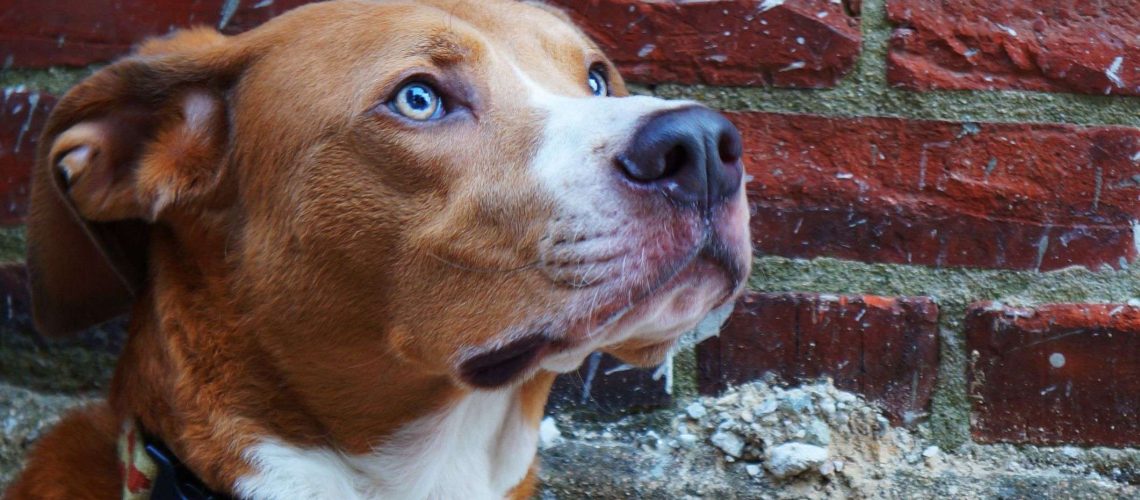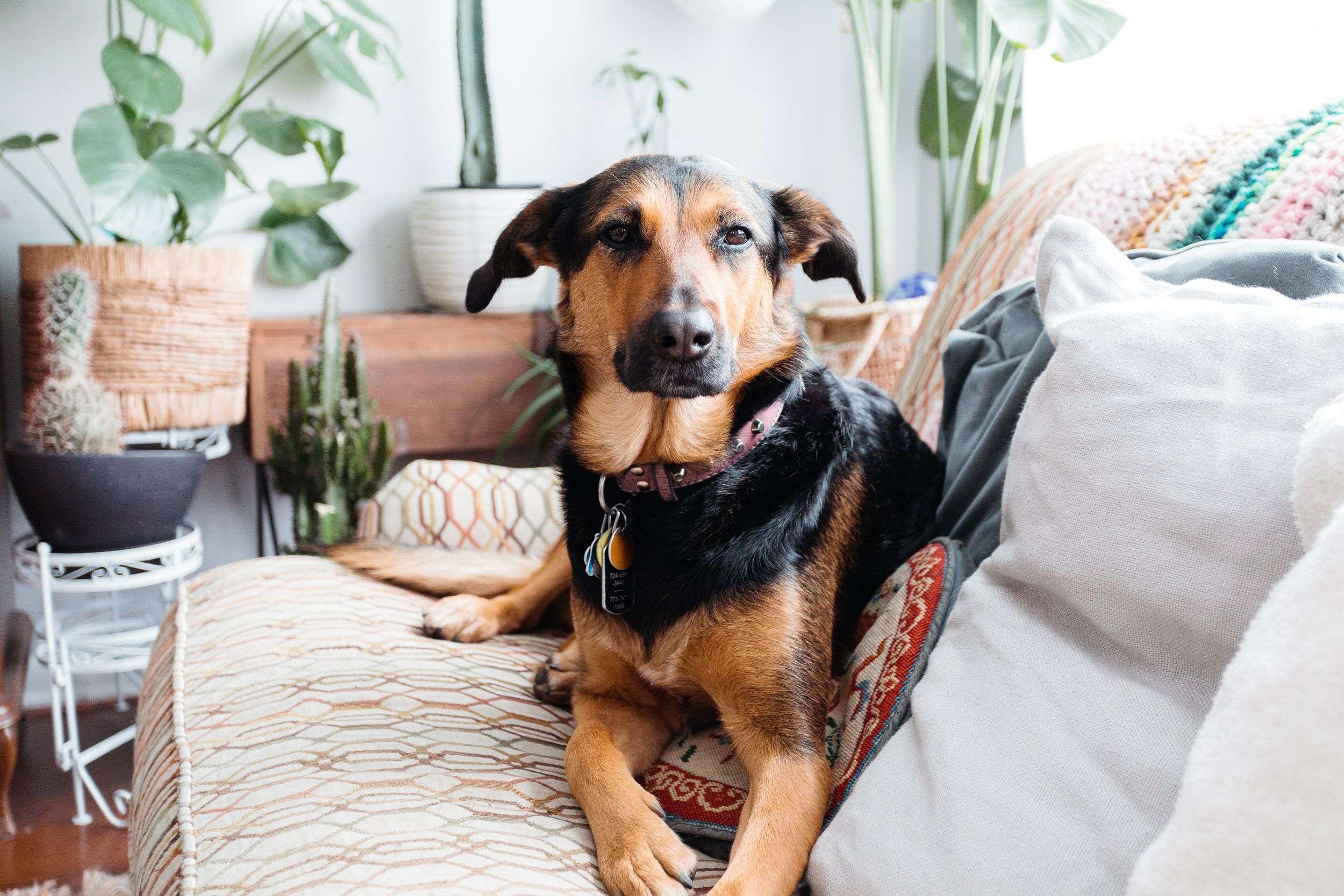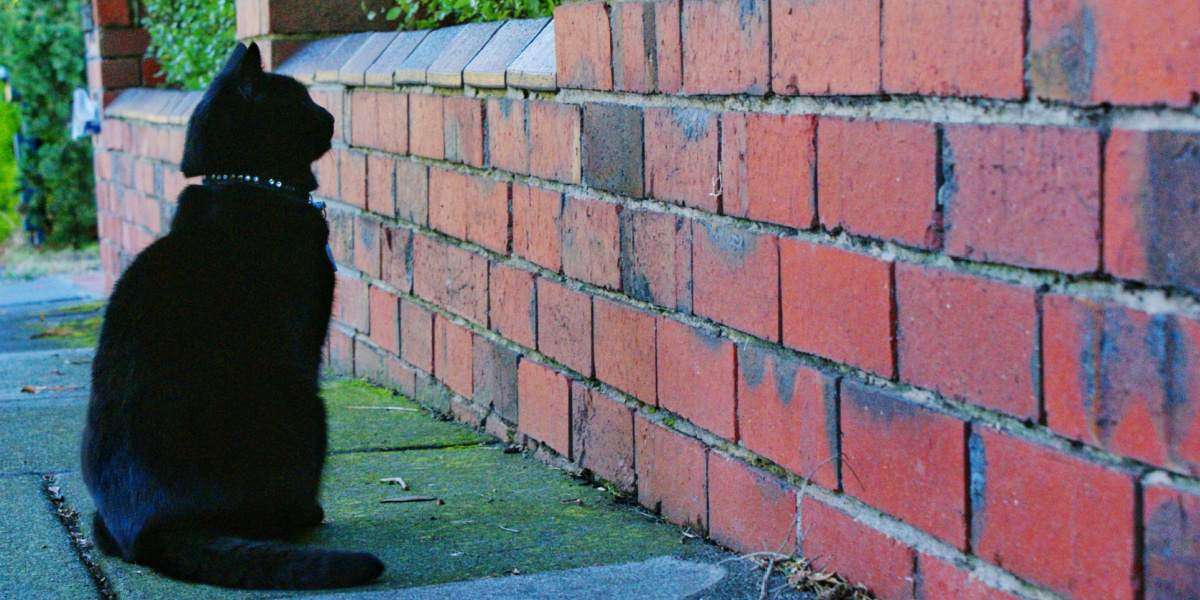Key Takeaways:
- Dogs may stare at walls due to sensory issues or hallucinations, so it's important to rule out any medical conditions.
- Some dogs stare at walls as a form of entertainment or mental stimulation when they are bored.
- Staring at walls could be a sign of anxiety or fear in dogs, and addressing the underlying cause is crucial for their well-being.
- Occasionally, dogs may be staring at something we can't see, such as insects or small movements in the wall.
- If your dog suddenly starts staring at walls obsessively, it's recommended to consult with a veterinarian or animal behaviorist for further evaluation and guidance.
Have you ever wondered why your furry friend sometimes seems fixated on staring at the wall? It may seem like a strange behavior, but understanding the reasons behind it can provide valuable insights into your dog's well-being. In fact, there are seven compelling reasons why dogs exhibit this peculiar habit. By delving into this subject, you'll not only gain a deeper understanding of your canine companion but also enhance the bond you share. So, let's explore the fascinating world of why your dog stares at the wall and uncover the secrets behind this intriguing behavior. Get ready to discover a whole new level of connection with your four-legged friend!
Why is My Dog Staring at the Wall?
Curiosity and Attention
One possible reason why your dog may be staring at the wall is out of curiosity or attention. Dogs have a keen sense of hearing and smell, and they are often curious about their surroundings. They may notice sounds or smells coming from behind the wall, which piques their interest and leads them to stare in that direction. It's like when you hear a noise in another room and can't help but turn your head to see what's going on.
Additionally, dogs are highly observant creatures, and they might be attracted to movements or shadows on the wall. These movements could be caused by insects, birds, or even reflections from outside sources like passing cars. Your dog's natural instinct to chase or investigate these movements can result in them fixating on the wall.
Feeling Anxious or Stressed
Another possible explanation for your dog's wall-staring behavior is anxiety or stress. Dogs can experience anxiety just like humans do, and it can manifest in various ways. If your dog is feeling anxious or stressed, they may seek comfort by finding a safe spot to retreat to. The corner of a room near a wall might provide them with a sense of security, hence why they may choose to stare at it.
In some cases, dogs may develop obsessive-compulsive behaviors as a result of anxiety or stress. This could include repetitive actions such as pacing back and forth or fixating on specific objects like walls. If you notice that your dog's wall-staring behavior is accompanied by other signs of anxiety such as panting, restlessness, or excessive grooming, it would be best to consult with a veterinarian for further evaluation.
Possible Reasons for Your Dog's Wall-Staring Behavior
Medical Explanations for Dogs Staring at Walls
In some instances, a medical issue may be the underlying cause of your dog's wall-staring behavior. Certain health conditions can affect a dog's neurological system, leading to abnormal behaviors. For example, seizures or focal motor seizures can cause dogs to stare blankly at walls or other objects. If you suspect that your dog's wall-staring is accompanied by other seizure-like symptoms such as muscle twitching, drooling, or loss of consciousness, it is crucial to seek immediate veterinary attention.
Furthermore, vision problems could also contribute to your dog's fixation on walls. Dogs with impaired vision may struggle to see clearly and might focus on high-contrast areas like walls or corners. If you notice any other signs of vision impairment in your dog such as bumping into furniture or difficulty navigating familiar spaces, it would be wise to have their eyes checked by a veterinarian.
Determining if Your Dog's Wall-Staring is Normal or Abnormal
It is essential to distinguish between normal and abnormal wall-staring behavior in dogs. Occasional brief periods of staring at walls out of curiosity or attention are generally considered normal. However, if your dog excessively fixates on walls for extended periods and shows signs of distress or impaired daily functioning, it may indicate an underlying issue that requires attention.
If you are unsure whether your dog's wall-staring behavior is normal or abnormal, consider the following factors:
- Duration: How long does your dog stare at the wall? A few seconds or minutes versus hours?
- Frequency: How often does your dog engage in this behavior? Is it occasional or constant?
- Accompanying signs: Is your dog showing any other unusual behaviors or signs of distress?
By evaluating these factors, you can better assess whether your dog's wall-staring is within the normal range or if it requires further investigation by a veterinarian.
Determining if Your Dog's Wall-Staring is Normal or Abnormal
Determining whether your dog's wall-staring behavior is normal or abnormal can be a bit tricky. While it's not uncommon for dogs to occasionally stare at walls, excessive and prolonged wall-staring may indicate an underlying issue that needs attention. To determine if your dog's behavior falls within the normal range, it's important to consider factors such as frequency, duration, and any accompanying signs of distress.
Frequency:
If your dog stares at walls occasionally or for short periods of time, it may be considered within the normal range. Dogs are naturally curious creatures and may be intrigued by sounds or movements they detect behind the walls. However, if your dog engages in wall-staring excessively throughout the day or becomes fixated on specific spots for extended periods, it could be a cause for concern.
Duration:
The duration of your dog's wall-staring episodes can also provide insight into whether it is normal or abnormal behavior. Brief moments of staring lasting a few seconds to a minute are generally not worrisome. On the other hand, if your dog spends long stretches of time staring at walls without any breaks or shows signs of being unable to snap out of this behavior, it may indicate an underlying problem.
Accompanying Signs of Distress:
Pay attention to any additional signs that accompany your dog's wall-staring behavior. If your dog appears anxious, restless, exhibits repetitive behaviors like pacing or whining, or shows changes in appetite or sleep patterns, these could be indications that something is amiss. It is advisable to consult with a veterinarian who can assess your dog's overall health and behavior to determine if further investigation is necessary.
Signs and Body Language of Dogs Staring at Walls
When your dog stares at walls, it's important to observe their overall body language and any accompanying signs that may provide clues about their state of mind. Dogs communicate through a combination of vocalizations, facial expressions, and body postures. Here are some common signs and body language cues to look out for when your dog engages in wall-staring:
Fixed Gaze:
One of the most obvious signs is a fixed gaze directed towards the wall. Your dog's eyes may appear focused and unblinking, as if they are completely absorbed by whatever they see or perceive.
Tail Position:
Observe your dog's tail position during wall-staring episodes. If the tail is tucked between the legs or held low, it could indicate fear or anxiety. Conversely, a high-held tail could suggest excitement or heightened arousal.
Body Posture:
Take note of your dog's overall body posture while staring at walls. If they stand stiffly with tense muscles or exhibit a crouched position with lowered head and raised hackles (the hair along their back), it might indicate discomfort or a perceived threat.
Additional Signs:
In addition to the above cues, watch for other signs such as dilated pupils, panting, excessive drooling, trembling, or growling. These behaviors can provide further insights into your dog's emotional state during wall-staring episodes.
Understanding these signs and body language can help you gauge whether your dog's wall-staring behavior is simply curiosity or if there may be underlying issues that require attention.
How Environmental Factors Impact a Dog's Wall-Staring Habit
Environmental factors play a significant role in shaping a dog's behavior, including their tendency to stare at walls. Dogs are highly sensitive to changes in their surroundings and may react differently depending on various environmental stimuli. Here are some key factors that can impact a dog's wall-staring habit:
Visual Stimulation:
Certain visual stimuli within the environment can capture a dog's attention and trigger wall-staring behavior. For example, reflections from shiny objects or light bouncing off walls may create intriguing visual patterns that captivate dogs. Similarly, movement behind walls, such as rodents or insects, can also pique their curiosity.
Noise and Sounds:
Auditory stimuli can also influence a dog's wall-staring behavior. Unfamiliar or repetitive noises coming from behind walls, such as plumbing sounds or electrical humming, may draw their attention and cause them to fixate on specific spots.
Anxiety and Stress:
Environmental factors that contribute to anxiety or stress can intensify a dog's wall-staring habit. Changes in the household routine, loud noises like thunderstorms or fireworks, or the presence of unfamiliar people or animals can all create an environment that triggers anxious behaviors in dogs.
Creating a Calming Environment:
To address excessive wall-staring caused by environmental factors, it is important to create a calm and secure environment for your dog. Providing them with a designated safe space where they can retreat to when feeling overwhelmed can help alleviate anxiety. Additionally, engaging your dog in mentally stimulating activities like puzzle toys or obedience training exercises can redirect their focus away from wall-staring.
Addressing and Alleviating Excessive Wall-Staring in Dogs
If you notice that your dog's wall-staring behavior has become excessive or problematic, there are steps you can take to address and alleviate this issue. Here are some strategies that may help:
Veterinary Examination:
Schedule a visit with your veterinarian to rule out any underlying medical conditions that could be contributing to your dog's wall-staring behavior. Certain health issues like neurological disorders or vision problems can manifest as excessive staring.
Behavioral Modification:
Consult with a professional dog trainer or behaviorist who can assess your dog's behavior and provide guidance on how to modify their wall-staring habit. They may recommend positive reinforcement techniques, such as rewarding your dog for redirecting their attention away from walls.
Environmental Enrichment:
Enriching your dog's environment with stimulating activities and toys can help divert their focus from wall-staring. Provide them with interactive toys, puzzle feeders, or engage in regular play sessions to keep them mentally engaged and physically active.
Remember, every dog is unique, and what works for one may not work for another. Patience, consistency, and understanding are key when addressing excessive wall-staring in dogs. With proper intervention and a supportive environment, you can help your furry friend overcome this behavior and lead a happier, more balanced life.
In conclusion, there are several reasons why your dog may stare at the wall. It could be due to boredom, curiosity, seeing or hearing something we cannot, or simply because they enjoy it.
What does it mean when dog stares at wall?
When a dog wants a treat, it might stare at the wall as a way of seeking attention. To prevent encouraging this behavior, it's important not to consistently give your dog a treat or attention in the same area of your home.
What does it mean when my dog stares at nothing?
Symptoms of canine cognitive dysfunction can include long periods of staring at nothing, walls, or the floor. This condition is sometimes referred to as "sundowner syndrome" and is most commonly seen in older dogs.
Why do dogs sit and stare in a corner?
If your dog chooses to sit in a corner, it could be a sign that he is not feeling well. Dogs that are experiencing sadness, having seizures, or getting older and developing dementia will often seek out a corner to sit in, as they feel more secure in that space.
How do I know if my dog is in pain?
What are the common indicators of pain in dogs? Typical behaviors include trembling, flattened ears, a lowered posture, aggression, irritability, excessive panting or whining, excessive licking or scratching of a particular area, reluctance to engage in play, interaction, or exercise, limping, stiffness after rest, and loss of appetite.
Can dogs see spirits?
In ancient times, it was believed by certain cultures that burying dogs alongside the deceased would safeguard their souls from evil spirits and guide them into the afterlife. However, there is no scientific evidence to support the notion that dogs can perceive ghosts in our surroundings.
What does it mean when a dog stares at you without blinking?
Dogs make direct eye contact with each other to establish dominance or display aggression. If a dog stares intently at a person without blinking, it could be a warning for the person to back off. This behavior is more likely to occur towards strangers, particularly if the dog feels the need to protect its owner.

















